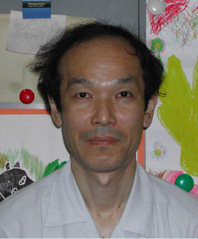 Hirohisa Kishino, Ph.D.
Hirohisa Kishino, Ph.D.
Professor emeritus, University of Tokyo
Visiting researcher, AI/Data Science Social
Implementation Laboratory, Chuo University
Email: kishino@g.ecc.u-tokyo.ac.jp;
khirohisa001v@g.chuo-u.ac.jp
Current Research Interests and
Collaborations
Evolutionary rates and divergence times:
Rates and times
are two fundamental quantities in evolutionary study. When molecular evolution
is neutral, the evolutionary rate is constant as far as the mutation rate and
the generation time remains constant. The rate of molecular evolution can vary
due to the change of the functional constraints, mutation rates and generation
lengths. Jeff Thorne
and I expressed the variability of the evolutionary rate as a stochastic
process and developed a Bayesian hierarchical model to estimate the
evolutionary rates and the divergence times. The estimated pattern of the
evolutionary rates gives us a clue on the driving force causing the rate
change. The functional constraints vary among genes whereas the change of the
mutation rates and generation lengths affects on all loci in the genomes
equally. Therefore, analysis of multiple loci makes it possible to identify the
one out of the above candidate causes. The information on the distribution of
divergence times may also be used to measure the phylogenetic diversity and
skew of species composition.
Adaptive evolution of virus and protein structure:
In collaboration
with Teruaki Watabe,
we try to estimate the evolution of genotypes behind the adaptive evolution of
phenotypes. Molecular mechanism behind the evolution of phenotypes is decomposed
into the evolution of the protein structure and evolution of the expression
level. RNA virus has a relatively simple “life cycle” with a few key
components, one of which is the spike proteins bound to the receptors of the
host cells. A viral population escapes from the attacks of antibodies by
changing the microstructure in the binding region of the spike protein to the
antibody. Because the binding region to the antibody is close to or even
overlaps the binding region to the receptors of the host cells, the escape from
the antibodies is accompanied with the reduced ability of binding to the host
cells. Therefore, the strengths of the binding abilities of these two types
determine the fitness. By integrating sequence information and structural
information, we identify the region under diversifying selection and predict
the fate of mutations.
Population structure and adaptation measured by
genomics and transcriptomics:
Geographical and environmental barriers and
human activities affect the distribution and dynamics of a population. Shuichi Kitada
and I have long studied the effects of marine stock enhancement programs by
survey sampling approach and population genetics methodology. The environmental
stress and the intended or unintended selection of farming and conservation
activities may affect the physiological process of the marine organisms. We are
trying to understand it through a graphical modeling of gene expression
profiles.
With full thanks to my collaborators:
I thank my friends for collaboration of statistical modeling and analysis in various fields such as agronomy, community ecology, psychology, medicine, and behavioral science.